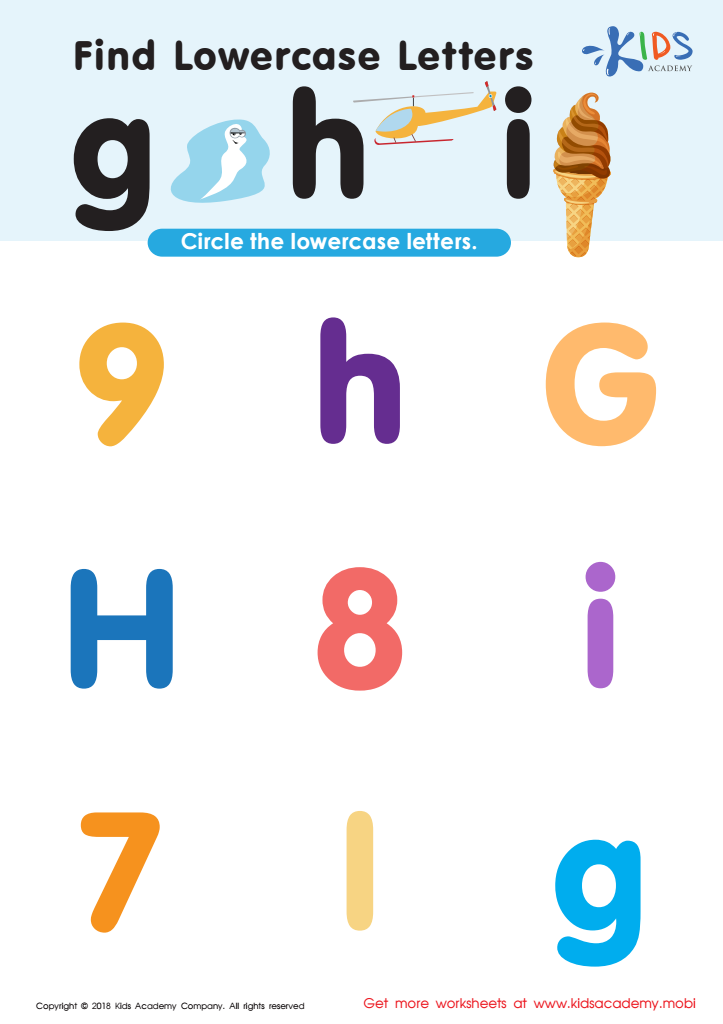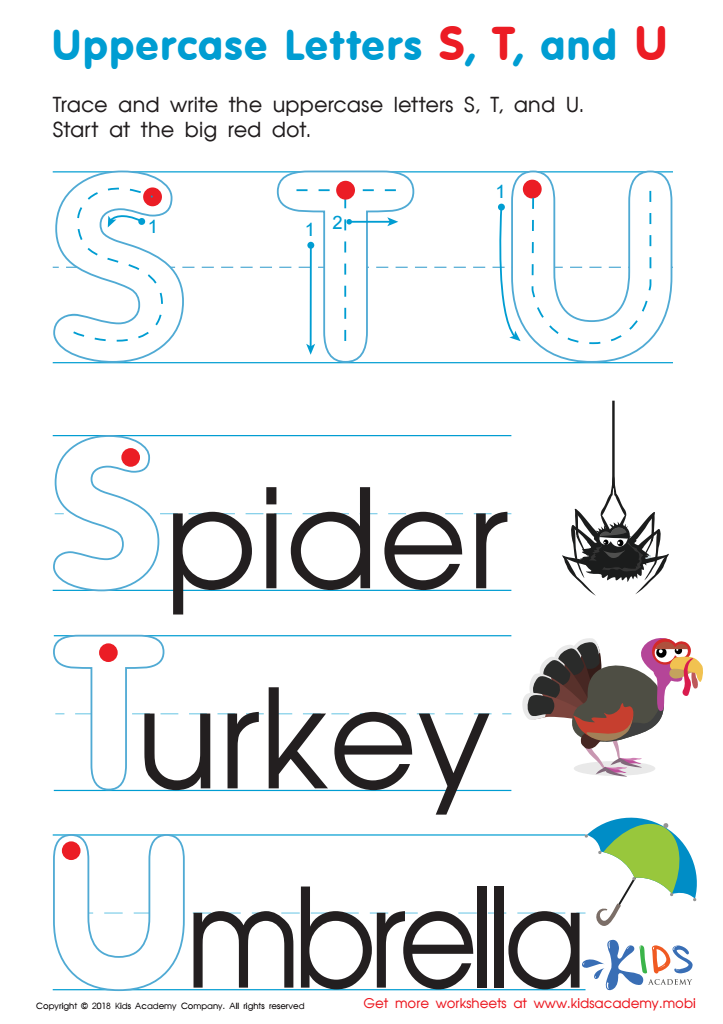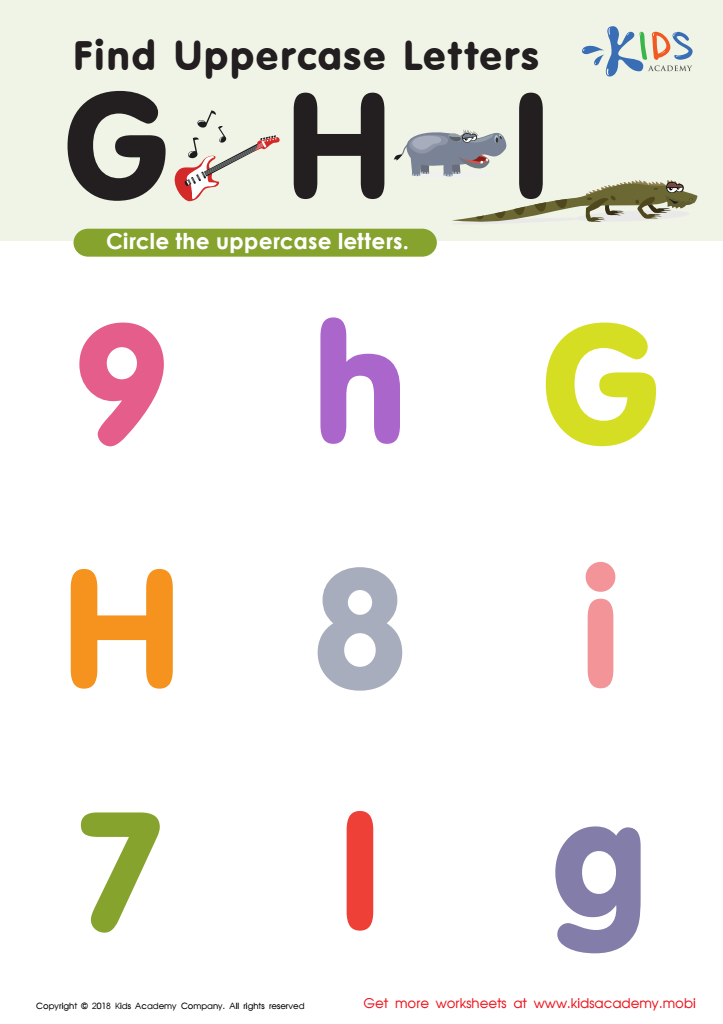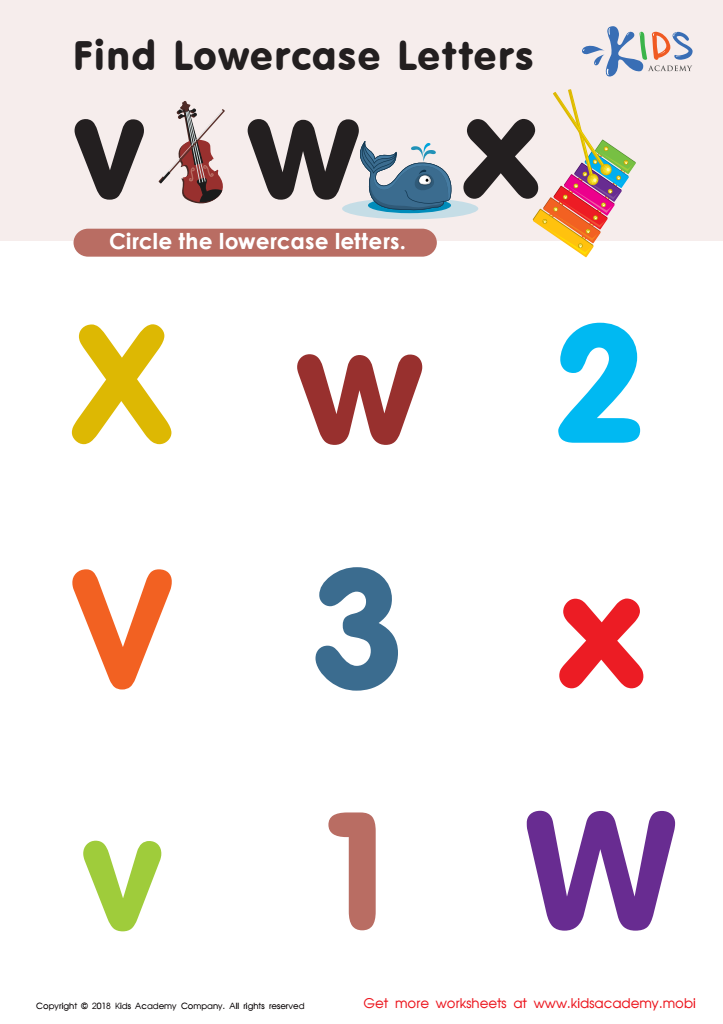Letter recognition Normal Upper & Lowercase Letters Worksheets for Ages 3-4
22 filtered results
-
From - To
Introducing our engaging "Letter Recognition Normal Upper & Lowercase Letters Worksheets" designed specifically for children ages 3-4. These worksheets provide a fun way for young learners to familiarize themselves with the alphabet, enhancing their reading readiness and foundational skills. Kids will enjoy colorful illustrations and interactive activities that promote the identification of both uppercase and lowercase letters. Our thoughtfully crafted exercises encourage creativity while reinforcing letter recognition in a supportive environment. Perfect for home or classroom use, these worksheets are an essential resource for nurturing early literacy skills. Dive into the joy of learning with our delightful letter recognition activities!


Find Lowercase Letters g h i Worksheet


I Stands High Worksheet


Uppercase Letters S, T, and U Worksheet


Find lowercase Letters p q r Worksheet


Find Uppercase Letters G, H, and I Worksheet


Lowercase Letters p q r Worksheet


Find Lowercase Letters d e f Worksheet


Uppercase Letters Maze Worksheet


Identifying Lowercase Letters Worksheet


Find Uppercase Letters Worksheet


Find Uppercase Letters J, K, and L Worksheet


Find Uppercase Letters Y Z Worksheet


Which Letter Should you Choose? Worksheet


Find lowercase Letters s t u Worksheet


Find Uppercase Letters A, B, and C Worksheet


Find Lowercase Letters y z Worksheet


Find Uppercase Letters V, W, X Worksheet


Find Lowercase Letters m n o Worksheet


Find Uppercase Letters D, E, and F Worksheet


Find lowercase letters a b c Worksheet


Find Lowercase Letters v w x Worksheet


Find Uppercase Letters M, N, and O Worksheet
Letter recognition is a fundamental skill for early literacy development in children aged 3-4. Understanding both uppercase and lowercase letters helps young learners grasp the building blocks of reading and writing, fostering language acquisition from an early age. Parents and teachers should care about this skill because it lays the groundwork for phonemic awareness and vocabulary expansion.
Uppercase letters often signify starting points of sentences and proper nouns, while lowercase letters form the bulk of written communication. Recognizing these two forms allows children to understand different contexts when approaching texts. Early letter recognition also supports children's fine motor development as they begin practicing writing, connecting their visual recognition with physical output.
Additionally, learning letters can be a gateway to fostering a love of reading and books. Interactive activities, such as reading together and playing games, can enhance letter recognition while promoting positive parent-child experiences. By encouraging letter recognition early on, parents and teachers create a strong foundation for literacy, paving the path for successful reading and communication skills in later years. Prioritizing this skill ultimately contributes to a child’s confidence and competence in their educational journey.
 Assign to My Students
Assign to My Students












